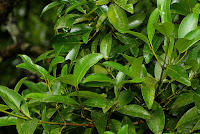<> Lexias dirtea Fabricius,1793 <>
the Black-tipped Archduke ผีเสื้ออ๊าชดุ๊คปลายหนวดดำ
Click on any photo to see larger version

Photo taken at Doi Suthep-Pui National Park, Chiang Mai, Thailand ♂ 400m a.s.l.

Fairly widespread through the region although I have only seen it once. It is uncommon in many places but may be common locally. It is sexually dimorphic and the sexes look quite different to each other. It is almost impossible to distinguish from its more common sister species, L.pardalis, unless you can get close enough to see the tips of the antennae which are black in dirtea and orange in pardalis. Multivoltine with several broods per annum. Further study of this species is much needed.
Synonyms and previously used names: Euthalia dirtea, Papilio dirtea, Adolias dirtea, Euthalia acutipenna, Lexias pandita, Euthalia eleanor
Taxonomy: Animalia - Arthropoda - Insecta - Lepidoptera - Nymphalidae - Limenitidinae - Lexias - dirtea
Regional Distribution: India, Bhutan, Bangladesh, Myanmar, Thailand, Laos, Vietnam, China, Malaysia, Singapore, Indonesia, Philippines
Habitat: montane forest, up to 1800m a.s.l. Wingspan: 65-90mm
Flight time: most of the year, depending on location
Larval Hosts: Agathis robusta (Araucariaceae), Cratoxylum maingayi (Hypericaceae), Garcinia lateriflora (Clusiaceae), Calophyllum sp. (Calophyllaceae). Hosts used depends upon location and availability of plant species.
Adult Food Sources: Nectar - Not known to visit flowers. Other - mud puddling, over-ripe fruit, animal dung, carrion
Links to other pages in this series for species in the same subfamily
Athyma perius
Auzakia danava
Euthalia alpheda
Euthalia lubentina
Lasippa viraja
Limenitis asura
Neptis cartica
Neptis miah
Pantoporia hordonia
Sumalia daraxa
Athyma pravara
Bhagadatta austenia
Euthalia anosia
Euthalia monina
Lebadea martha
Limenitis dudu
Neptis clinia
Neptis nashona
Pantoporia paraka
Sumalia zulema


